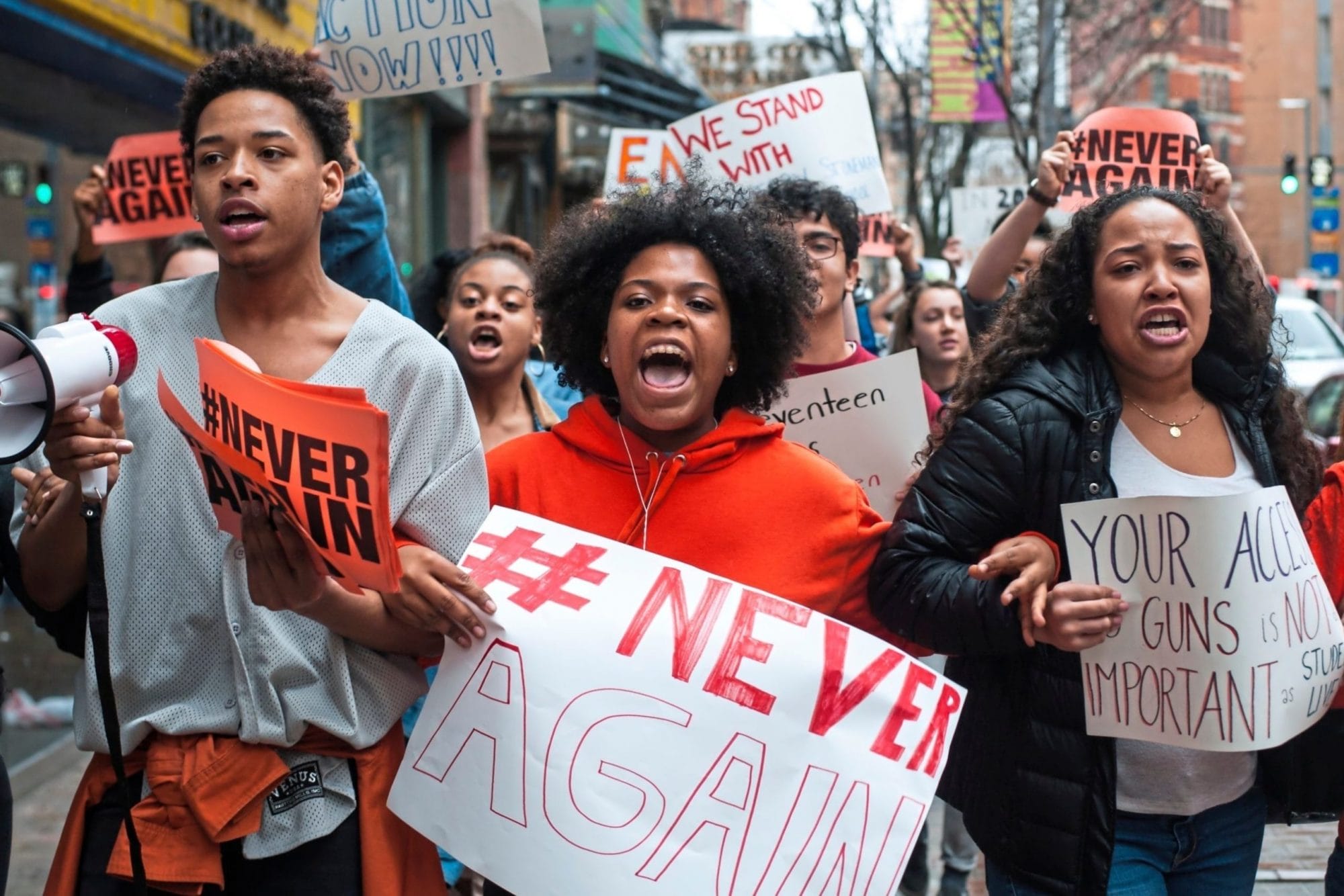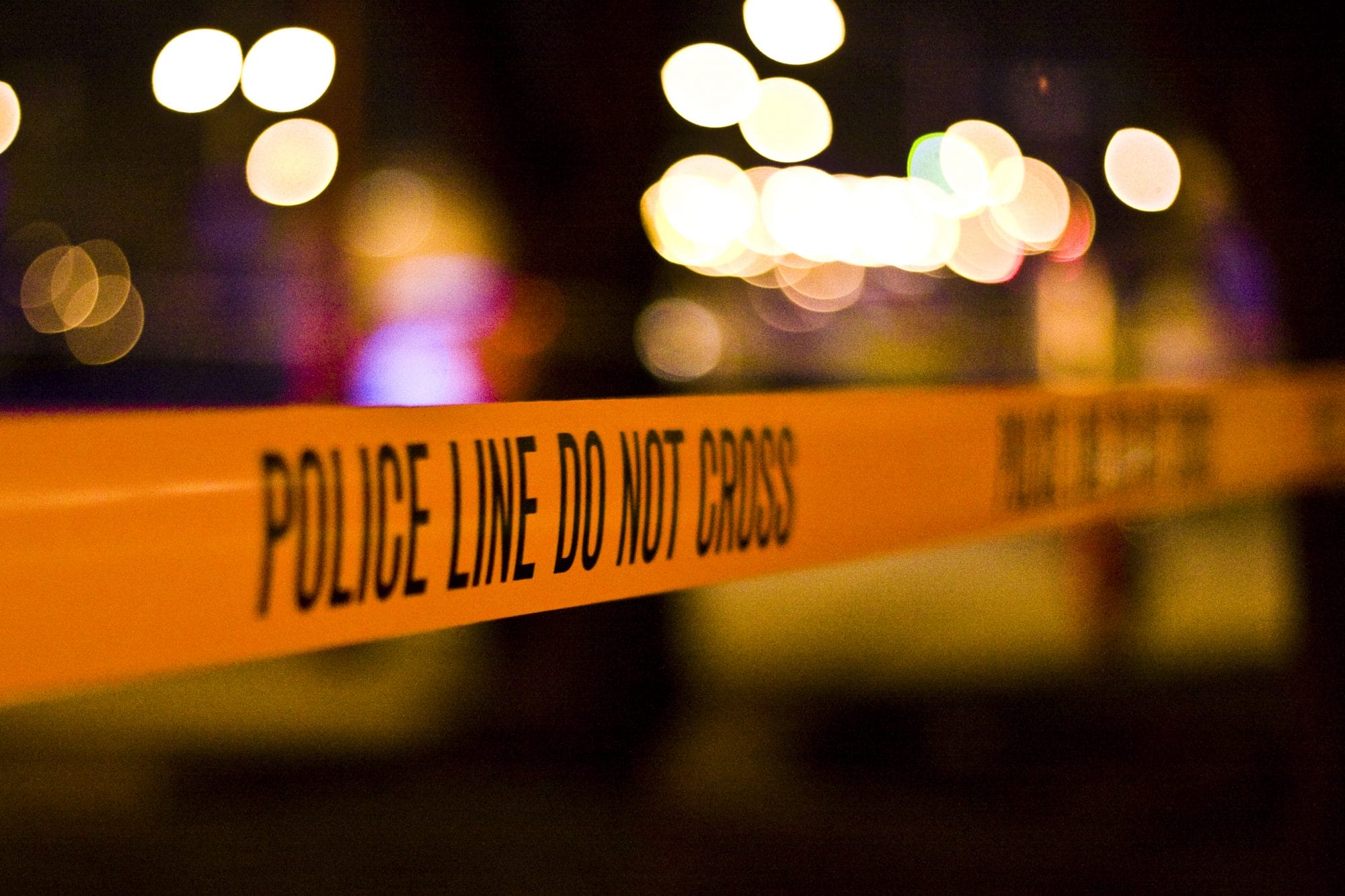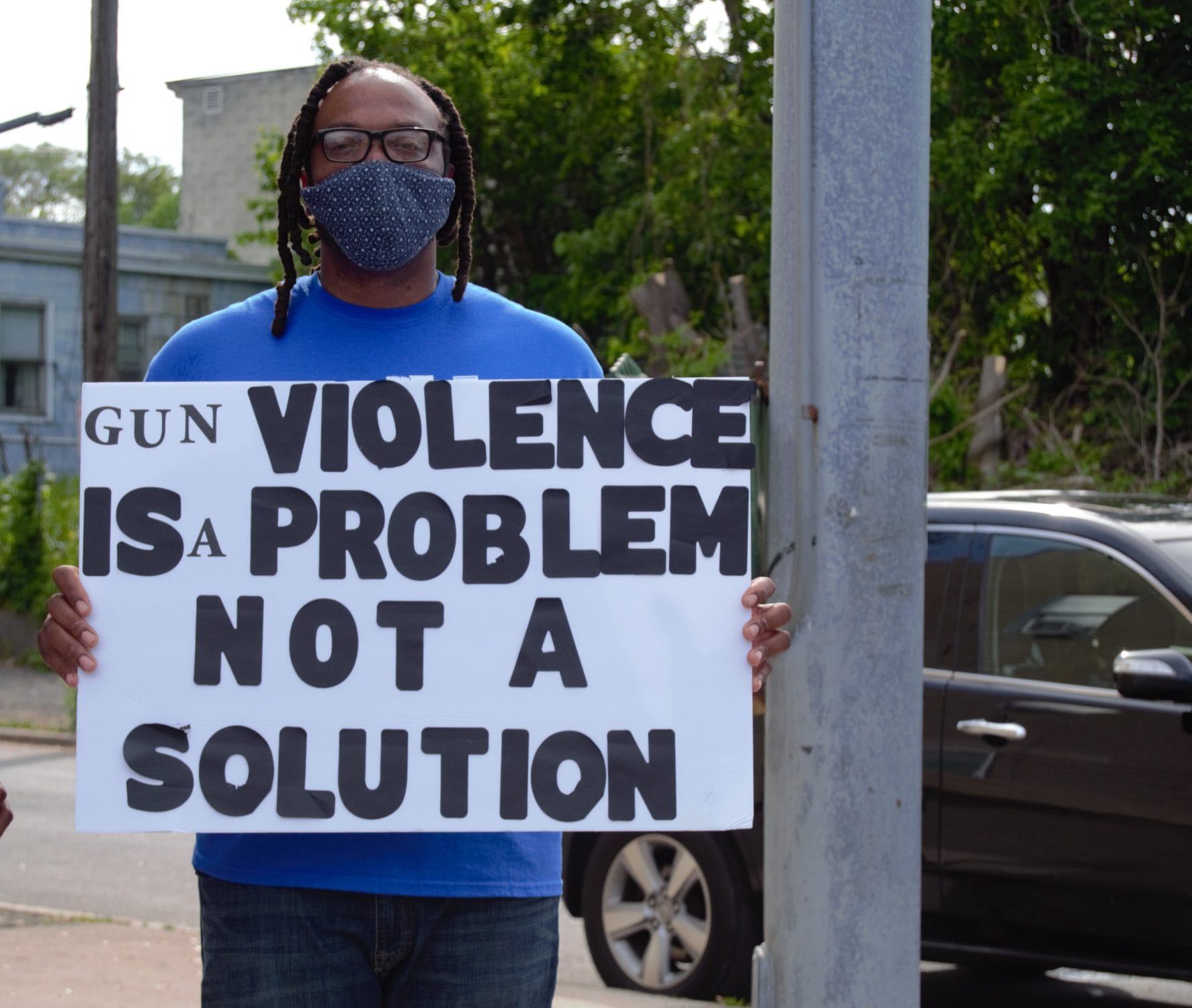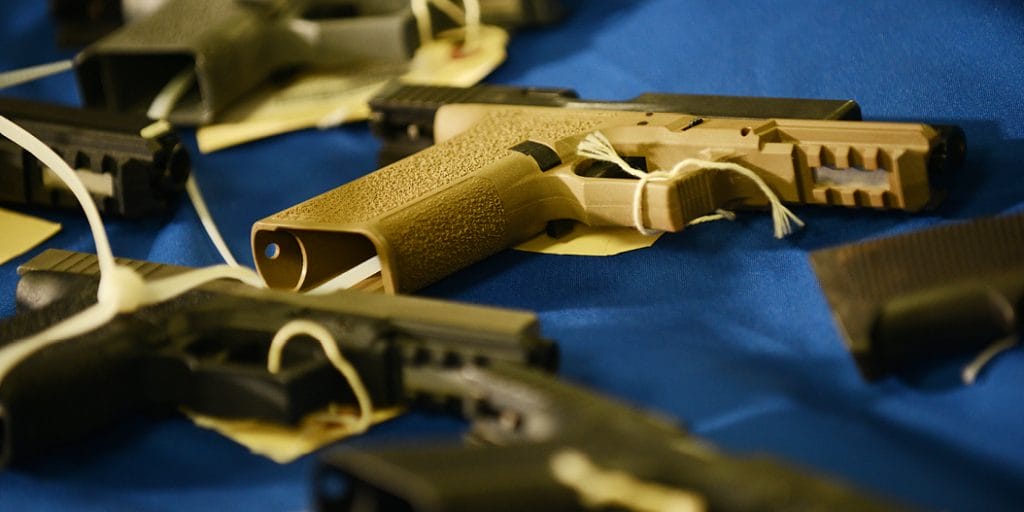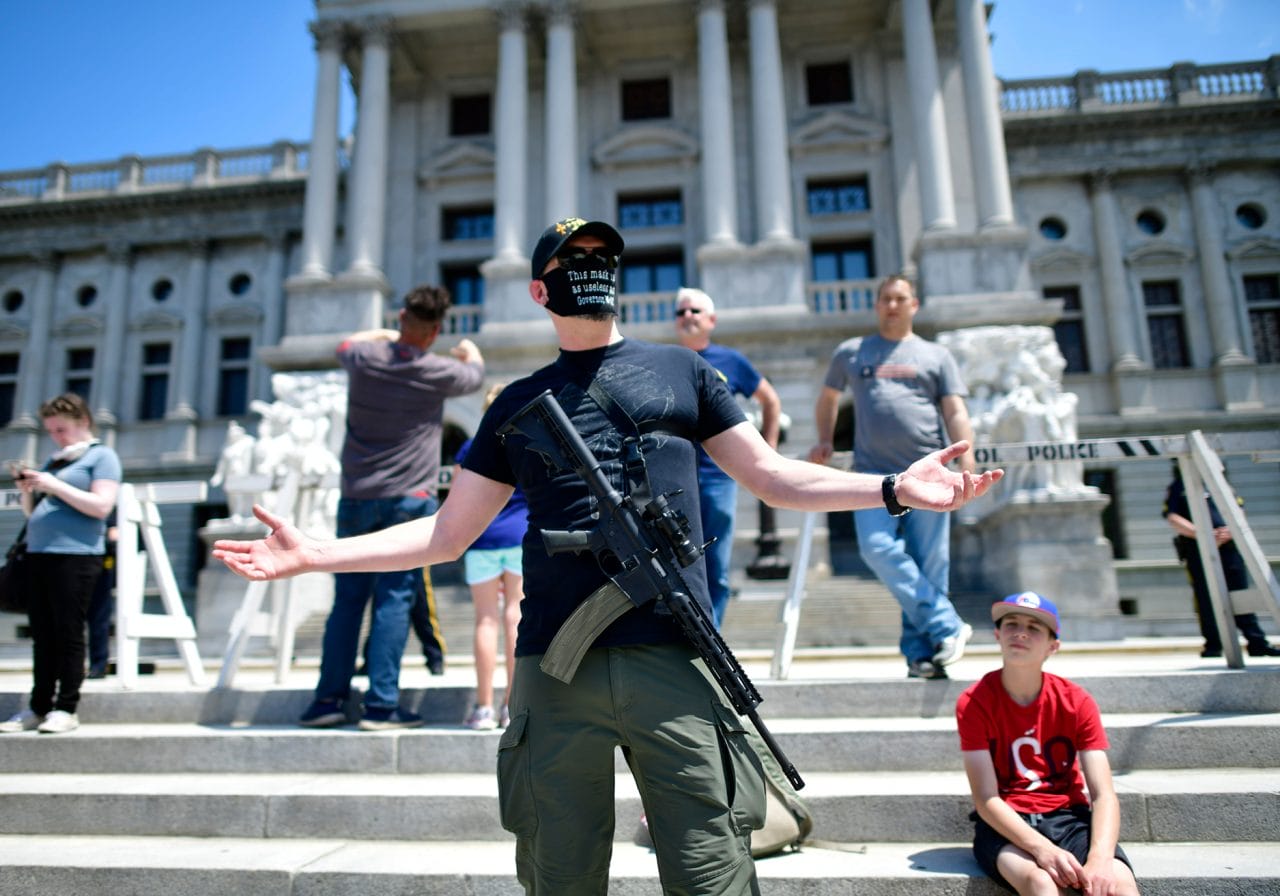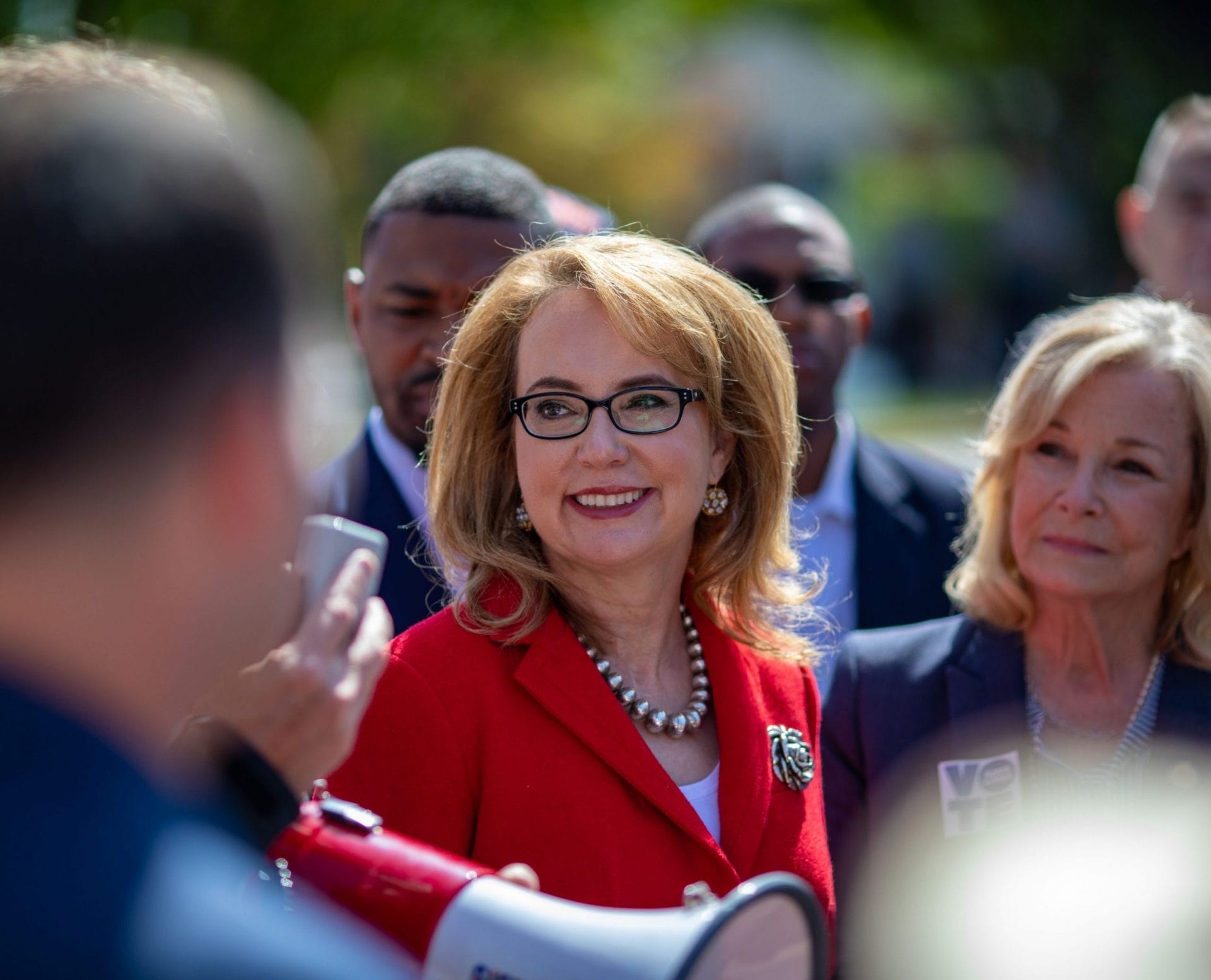
Safer for All: How Virginia Can Lead the Nation in the Fight Against Gun Violence
For years, conservative majorities in Virginia’s General Assembly blocked meaningful action on gun safety.
As a result, Virginia’s weak gun laws fueled gun violence and gun trafficking: from 2016 to 2019, Virginia’s gun death rate was just above the astonishingly high US average.1 The consequences of gun violence in the state are enormous: thousands of lives lost, families grieving, generational trauma, and hundreds of millions of dollars in costs borne by Virginia taxpayers every year.
Virginia Continues to Lead on Gun Safety
Feb 02, 2021
In 2019, Virginia voters made their voices heard, electing dozens of gun safety champions to the General Assembly. As a result, in 2020 and 2021, the legislature greatly strengthened Virginia’s gun safety laws, including passage of laws requiring background checks on gun sales, establishing an extreme risk protection law, strengthening protections for victims of domestic violence, and securing funding for community violence intervention programs. At the beginning of 2020, Virginia received a “D” grade on Giffords Law Center’s annual State Gun Law Scorecard. By the beginning of 2021, Virginia had significantly raised its grade to a “B.”
And Virginians are not done yet. The next governor has the opportunity to build on this foundational progress. Action on gun safety is needed now more than ever: amid the Covid-19 pandemic, the US has seen an unprecedented spike in gun sales and gun violence, and in 2020, the country suffered the largest one-year increase in murders on record, driven by spikes in fatal shootings.2 Over the last two years, Virginia emerged as a national leader in the fight for gun safety. The next governor will decide whether Virginia continues to lead that fight.
Top Policy Recommendations:
- Invest in Lifesaving Community Violence Intervention Programs
- Strengthen Virginia’s Background Checks Law
- Strengthen Protections for Victims of Domestic Violence and Hate Crimes
- Strengthen Protections Against Military-Style Weapons
- Strengthen Standards for Openly Carrying Guns in Public Spaces
MEDIA REQUESTS
Our experts can speak to the full spectrum of gun violence prevention issues. Have a question? Email us at media@giffords.org.
Contact
Amid a devastating pandemic, economic crisis, and record-setting gun sales, communities across the country faced an alarming spike in shootings, homicides, and related traumas in 2020 and into 2021. Virginia has been no exception: Gun Violence Archive records show that Virginia experienced a 24% increase in gun homicides in 2020 compared to 2019. Other data sources indicate that 2020 likely saw a significant increase in domestic violence.3 Even before the pandemic, gun death and injury have steadily increased in Virginia starting in 2012. Virginia’s gun homicide rate climbed by 59% between 2012-16 alone.4
Kids & Guns
Guns are the leading cause of death for Virginia’s children aged 1-17, ahead of both motor vehicle accidents and cancer. The parents of a Black 15-19-year-old boy in Virginia are about as likely to lose their son to gun violence as every other cause of death combined.5 From 2010-2019, at least 2,844 Virginians were killed in gun homicides, including at least 382 children and teens.6 Thousands more were shot but survived, left to grapple with life-altering injury and trauma. More than 6,400 Virginians also lost their lives in preventable gun suicides and unintentional shootings over this period, including at least 308 children and teens.6 In 2019, 58% of all suicide deaths in Virginia were caused by firearms, as were 48% of suicides among children and teens.7
Mass Shootings
While mass shootings account for only a small portion of overall gun deaths, they have become more frequent and more highly lethal in recent years: 5 out of the 10 deadliest shootings in modern US history occurred since 2016. (Giffords and other sources define “mass shootings” as incidents in which a shooter kills or injures four or more other people.) A majority of these shootings were perpetrated using assault weapons equipped with large-capacity magazines designed to enable shooters to fire large numbers of rounds at many targets in a short period of time.
Source
Lori Post et al., “Impact of Firearm Surveillance on Gun Control Policy: Regression Discontinuity Analysis,” JMIR Public Health and Surveillance 7, no. 4 (2021): e26042, https://doi.org/10.2196/26042. Study defined mass shooting as four or more victims killed with a firearm at a public location. Familicides and felony killings were excluded.
Virginia has suffered some of the nation’s deadliest mass shooting attacks, including the 2007 shooting on the campus of Virginia Tech, in which a gunman shot 81 people and murdered 32, and a 2019 attack in Virginia Beach, in which a gunman wielding a firearm with multiple large capacity magazines murdered 12 people and left at least four others hospitalized. The Virginia Beach shooting was one of at least 10 documented mass shootings in Virginia in 2019 alone; at least 8 people were killed and 37 injured in other, less high-profile mass shootings across the Commonwealth.8 In 2020, at least three people were murdered and 46 injured in 11 mass shootings across Virginia.8
Gun Trafficking
Virginia’s historically weak gun safety laws have made it a leading source of black-market guns trafficked into other states, especially on the northeastern seaboard. In 2019, ATF reported that Virginia exported crime guns (guns recovered by law enforcement after being used in crimes in other states) at the 12th highest rate among the 50 states.9 On a per capita basis, Virginia exported more than twice as many crime guns to other states as Maryland and more than five times as many as the District of Columbia.
- Virginia is by far the leading source of crime guns trafficked into Maryland and DC, and is the second leading source state for crime guns trafficked into North Carolina, Pennsylvania, and New York.
- Of crime guns recovered in DC, just 5% were purchased in the city, while 43% were purchased in Virginia—over four times as many as Maryland.
Racial Inequality
Communities across Virginia and the nation experience enormous inequality in safety. Young people of color, especially Black men and boys and their loved ones are very disproportionately impacted by our country’s gun violence crisis, and interpersonal shootings are disproportionately concentrated within neighborhoods marked by racial exclusion, segregation, police violence, and concentrated poverty. As a leading sociologist wrote, “America’s haves and have-nots are divided not just by how much people earn, where they went to school or what car they drive, but more fundamentally by whether they feel safe when they tuck their kids in at night.”10 More specifically:
- FBI homicide data indicates that in 2019, more than 50% of Virginia’s gun homicides took place in seven cities containing just 16% of the Commonwealth’s population.11 Richmond suffered the highest number of gun homicides while Petersburg suffered the highest rate.12
- Within Virginia’s cities, some communities suffered much more than others: for example, Giffords’ analysis showed that in 2015, over 50% of Richmond’s gun homicides occurred in census tracts with less than 12% of Richmond’s population.13 In these most impacted neighborhoods, over 86% of the residents were Black and 41% had incomes below the poverty line.13
This safety gap is one of the starkest examples of racial inequity in America and Virginia today. In Virginia from 2016 to 2019:
- 75% of people murdered with a gun were people of color and 68% were Black.
- Gun homicides accounted for 4% of all deaths among young white men and boys aged 15 to 24,14 but 10% of all deaths among young Latino men and boys the same age,15 and 44% of all deaths among young Black men and boys the same age.16 Nearly 96% of Black male homicide victims in this age group were killed with guns. Virginia’s Black residents were nearly nine times more likely to be murdered with a gun than white residents the same age.17 Among 15-24-year-old boys and men, that disparity was even higher, with Black residents over 17 times more likely to be murdered with a gun than their white peers.18
This violence also imposes enormous burdens on those who are not direct victims: while most people exposed to violence resiliently persevere, experts at the National Institute of Justice note that “youth living in inner cities show a higher prevalence of post-traumatic stress disorder than soldiers” in our wartime military.19
RELATED
We urge state lawmakers to enact the following lifesaving policy reforms to build on Virginia’s historic progress and meaningfully improve safety for all Virginians:
Invest in Lifesaving Violence Intervention Programs
The states and cities that have achieved the most significant reductions in gun violence in recent years have paired strong gun safety reforms with strong investments in community-based violence intervention programs that work to interrupt cycles of retaliatory shootings. In 2020, Virginia funded two small new grant programs focused on these gun violence intervention initiatives, but they are still severely underfunded. Virginia’s next governor needs to build on these investments by securing much stronger and more sustained funding for community-based gun violence intervention programs.
Across Virginia, hundreds of young people survive shooting injuries every year, a majority of them young Black men and boys. Most receive treatment for their physical wounds, but are then returned to the same circumstances in which they were violently attacked in the first place, while grappling with untreated trauma, toxic stress, and instability. In the vast majority of cases, these survivors’ attackers will not be arrested or face legal consequence for the shooting, so survivors have good reason to continue fearing for their own safety and for their loved ones.20
As a result, gunshot survivors are at significantly elevated risk of being shot again, as well as being involved in retaliatory violence. Many trauma centers describe this as a ‘revolving door’ of gunshot wounds, as survivors of violence become embroiled in cycles of violence, trauma, and retaliation. Many of these gunshot survivors are murdered within a short time after they are discharged from the hospital.
Research shows that targeted, sustained investments in community violence intervention services can be remarkably effective at reducing these individuals’ risk of violence and reinjury—at breaking the cycle of violence—and in a more effective and cost-effective manner than traditional law enforcement approaches. These effective programs typically employ professional violence interrupters or gang intervention specialists to (1) provide crisis response to shootings and homicides; (2) conduct outreach to engage at-risk young people, including victims of violence recovering in hospitals; and (3) connect victims and at-risk individuals with services that promote their safety and alternatives to violence, such as conflict mediation, counseling, and relocation away from dangerous circumstances.
In 2020, Virginia established the Gun Violence Intervention and Prevention program, a small grant program supporting community-based organizations, hospitals, and local agencies implementing gun violence prevention and intervention efforts. The same year, Virginia also established the smaller Youth and Gang Violence Prevention Program to fund expert assessments about local violence dynamics in five Virginia cities impacted by violence. These programs received $2.85 million in the state Budget. Virginia’s governor also directed $2.45 million from Virginia’s federal crime victim assistance block grant to support Hospital-Based Violence Intervention Programs.
Virginia’s next governor should ensure that Virginia’s budget includes a substantially stronger and sustained multi-year investment in the new Gun Violence Intervention and Prevention program. Increased investment would allow the state to support expansion of these lifesaving, cost-saving initiatives in more communities. Long-term funding could be secured from ongoing General Fund investments or other revenue sources, including modest fees on firearm dealers, reinvestment of costs savings achieved by criminal justice reform efforts, and/or dedicated set-aside funding from broader discretionary funding streams like the federal block grant for crime victims that Governor Northam tapped to support hospital-based violence intervention programs.
Source
Anthony A. Braga, David M. Kennedy, Elin J. Waring, and Anne Morrison Piehl, “Problem-oriented Policing, Deterrence, and Yotuh Violence: An Evaluation of Boston’s Operation Ceasefire,” Journal of Research in Crime and Delinquency 38, no. 3 (2001): 195–225.
Massachusetts, a national leader in this area, invests nearly $25 million annually in its statewide violence prevention grant initiatives, and independent researchers have confirmed that this sustained funding is effective at saving lives, saving taxpayer dollars, and narrowing racial health and safety disparities.21 Last year, Massachusetts’s budget appropriated more than 8 times as much funding in these initiatives as Virginia’s, despite the fact that Virginia suffered nearly four times as many gun homicides according to the most recent CDC data.
The next governor should also:
- Exercise authority over discretionary public safety, community health, and crime victim service grant programs, including the federal Victims of Crime Act (VOCA) Assistance block grant, to prioritize community-based responses to gun violence. By working across all agencies, including the Department of Criminal Justice Services, the next governor can ensure investments are properly coordinated and targeted at the most effective violence intervention programs, in communities where these funds are needed most.
- Through executive action or legislation, remove barriers that have kept victims of violence from receiving compensation through the Criminal Injuries Compensation Program for costs related to peer support and survivor counseling services.
- Consider other avenues for investing in violence prevention, such as efforts to ensure the state Medicaid program covers the provision of violence prevention counseling professional services to eligible gunshot patients at high risk of violent reinjury.
Strengthen Virginia’s Background Checks Law
Virginia lawmakers made history in 2020 when they passed universal background checks and the governor signed it into law. The new background checks law is a critical foundation for other gun safety policies and helps to ensure that people with significant histories of violence are blocked from purchasing firearms. Yet gaps still remain in the background check system that enable people to illegally obtain guns. The next governor has an opportunity to further strengthen the system by closing remaining gaps, especially on the sale of kits for so-called “ghost guns.”
Extend Background Checks to Most Firearm Transfers
The background checks law passed in 2020 requires background checks on gun sales, and does not apply to long term rentals, loans or transfers considered “gifts” instead of purchases. Most states that have enacted universal background check laws include reasonable and targeted exceptions to allow for short term rentals or loans without a background check while hunting or at a firing range, or for firearms to be given as gifts to a close family member.
Virginia’s background check law leaves a larger gap however, allowing people to rent and receive guns for longer periods of time without a background check, and to acquire guns from strangers and other individuals outside their family without a background check, as long as the transfer is not defined as a “sale.” Virginia should narrow these gaps to generally require background checks on firearm rentals, loans, and transfers of ownership, with targeted exceptions for family gifts, temporary and limited transfers at shooting ranges, emergency transfers to prevent suicide or other threats to life and safety, and other temporary rentals or loans.
Treat Ghost Guns Like Firearms
Virginia and federal gun safety laws, like background check requirements, generally apply to fully assembled firearms, or those that may be “readily converted” into a fully functioning firearm.22 But as explained in Giffords Law Center’s 2020 report, “Ghost Guns: How Untraceable Firearms Threaten Public Safety,” a fast-growing number of unlicensed, unaccountable sellers have created a loophole in recent years by marketing “do it yourself” ghost gun kits designed to enable amateurs to easily assemble their own guns from kits sold without any regulation whatsoever. These DIY weapons are called “ghost guns” because they are made from firearm parts and kits that enable people to build their own guns without any background check, sale record, or traceable serial number attached. In states with stronger gun safety laws, this is an attractive source of weapons for people who cannot pass a background check to acquire assembled weapons or who are otherwise trying to conceal their involvement with illegal gun trafficking.
To close this loophole, Virginia should adopt legislation to treat the sale of ghost gun kits and components the same way the law treats the sale of fully assembled guns, including background check, sale record, and firearm serialization requirements. In 2021, a bill to implement these reforms, H.B. 2276 (Simon), passed the House.
Other Recommendations to Strengthen Virginia’s Background Checks Laws
- Enact Waiting Periods: To help prevent impulsive “heat of the moment” acts of violence and self-harm, Virginia should generally require a cooling off waiting period of at least 72 hours between the sale and delivery of a firearm.
- Close the Charleston Loophole: While Virginia lawmakers narrowed the Charleston Loophole in the state’s background checks law in 2021, they should consider further action to provide law enforcement with more time, when needed, to complete thorough background checks, and to prevent dealers from completing delivery of a firearm before a purchaser has actually passed the check.
- Consider Firearm Licensing: Virginia lawmakers should consider legislation to strengthen Virginia’s background checks law by requiring a firearm license to be eligible to purchase or acquire a firearm. In April 2020, Giffords Law Center published a report titled, “The Case for Firearm Licensing,” which outlines why laws requiring prospective buyers to obtain a license to purchase a gun may be even more effective at reducing gun violence and trafficking than point-of-sale background check requirements alone.
Strengthen Protections for Domestic Violence & Hate Crime Victims
Virginia took important action in recent years to restrict firearm access by some people with significant histories of domestic violence and abuse. However, Virginia’s law still has major gaps in this area, and women and girls are at higher risk of being murdered with a gun in Virginia compared to the national average. Virginia’s next governor should take steps to close these gaps and ensure that all people convicted of domestic violence crimes or subject to domestic violence protective orders cannot access guns.
How America’s Gun Laws Fuel Armed Hate
—Mar 15, 2021
Other gaps in Virginia law also enable people to access guns after they have been convicted of violent hate crimes. A recent Giffords Law Center report, “How America’s Gun Laws Fuel Armed Hate,” documents how hate crimes have become more frequent and more frequently violent in recent years. Hate ideology has also motivated many mass shootings and other domestic terror incidents; in 2020, the FBI elevated “racially motivated violent extremism” to the same top security threat level as ISIS. To protect targeted communities from hate crime violence, Virginia’s next governor should propose legislation to ensure that people convicted of violent hate crimes cannot access guns for at least 10 years.
Strengthen Restrictions Related to Emergency and Preliminary Protective Orders
Unlike 22 other states, Virginia does not prohibit people from accessing guns while they are subject to protective orders issued in emergency cases prior to a full court hearing. Under Virginia law, people who become subject to these “emergency” or “preliminary” protective orders are restricted from transporting or carrying guns in public but are generally not restricted from possessing guns until the court has held a full hearing on the matter and replaced the ex parte protective order with a final protective order. This means that people subject to emergency court orders because they are an imminent danger of committing violence generally remain eligible to access guns during a volatile and dangerous period prior to their full court hearing.
Virginia should join states like neighboring North Carolina and West Virginia that restrict people from possessing firearms while they are subject to emergency protective orders, or to at least require courts to consider including a firearm restriction when issuing such emergency orders on a case-by-case basis. This would help protect victims of domestic violence, violent hate, and other victims protected by emergency court orders.
Virginia law should also explicitly authorize or require law enforcement officers responding to a domestic violence incident to temporarily remove firearms or ammunition discovered in plain sight or pursuant to a lawful search, for victims’ and officers’ safety.
Strengthen Restrictions for People Convicted of Domestic Violence Crimes, Including Dating Partner Violence
In 2021, Virginia enacted legislation to prohibit people convicted of some domestic violence misdemeanors from accessing guns—namely, those convicted of the crime of “assault and battery against a family or household member.”23 However, there are still gaps in this law that leave other victims of domestic violence unprotected.
First, the definition of “family or household member” in this law excludes most victims of dating violence. Unless the victim and abuser have been married, recently resided together, or have a child in common, a person convicted of assault and battery against an intimate partner is still able to legally access guns. This gap mirrors a gap in federal law known as “the Boyfriend Loophole” since it fails to provide the same protections to victims of dating violence as it does to other victims of domestic violence. Virginia should close the Boyfriend Loophole to prohibit people convicted of violence against an intimate partner from accessing guns.
Second, Virginia’s domestic violence gun restrictions also still do not apply to people convicted of committing other violent misdemeanors against family or household members, meaning that Virginia’s law is still weaker than federal law in this area. Federal law generally prohibits gun access by people convicted of any misdemeanor involving the use or attempted use of violence, or threatened use of a deadly weapon, against a family or household member, whether or not the elements of the crime are specific to domestic violence.24
Virginia should strengthen its domestic violence gun restrictions to ensure that people convicted of all violent misdemeanors against a family or household member are prohibited from accessing guns. Virginia lawmakers should also consider joining the at least 10 other states that prohibit people convicted of misdemeanor stalking offenses from accessing guns for at least a temporary period.
Require Courts to Verify that Domestic Violence Perpetrators Relinquish Firearms
Seventeen states, including neighboring Maryland and Tennessee, have passed legislation requiring people to provide receipts or some other document to verify that they properly got rid of their guns after being convicted of domestic violence crimes or becoming subject to a domestic violence protective order. In recent years, Virginia has enacted strong processes for ensuring that relinquishment occurs when people become subject to final protective orders and substantial risk orders from the courts. But in other contexts, there is still no clear process in Virginia for ensuring that people actually relinquish their guns after being required to do so, including when a person is convicted of a domestic violence crime.
Virginia should enact legislation to require people subject to firearm restrictions after a criminal conviction or court order to provide verification to the courts (such as receipts and/or affidavits) demonstrating that they properly sold or transferred their guns after becoming required to do so.
Strengthen Protections for Victims of Violent Hate
Virginia’s hate and gun laws have significant loopholes that allow people to keep and access guns, including assault weapons, after they have been convicted of violent hate crime misdemeanors. As a result, people can generally continue to possess and buy guns in Virginia after they have been convicted of certain hate-motivated assaults and batteries, as well as other hate crime misdemeanors involving verbal threats of violence, threateningly brandishing a firearm with intent to intimidate, or hate-motivated stalking.25 People convicted of these offenses are significantly more likely to commit subsequent acts of violence and to escalate the severity of their hate-motivated conduct.
To address the rising threat of violent hate, Virginia should prohibit people convicted of hate crime offenses involving violence or criminal threats of violence from acquiring or possessing guns for at least 10 years after conviction.
Strengthen Protections Against Military-Style Weapons
Virginia law places few restrictions on the sale of military-style weaponry—including assault weapons, large-capacity magazines, and fifty-caliber rifles—that enable gunmen to turn shootings into mass casualty events. As a result, people can acquire weapons equipped with features designed to allow battlefield combatants to fire at human targets as quickly and efficiently as possible starting at the age of 18.
Virginia should pass legislation restricting the future sale, transfer, and manufacture of assault weapons, and especially of large-capacity magazines, which enable continuous fire of large numbers of rounds. People currently in possession of these weapons and devices may be authorized to obtain special permits to remain in possession, provided they pass a thorough background check, comply with other safety requirements, and do not subsequently sell or transfer their weapon or magazines within Virginia. These protections would be especially important for reducing shooters’ ability to turn shootings into mass casualty events.
In the absence of broader restrictions, Virginia should significantly strengthen its eligibility standards for purchasing and possessing large capacity magazines and assault weapons, including raising the minimum age to acquire them, and requiring fingerprint-based background checks and safety certificates from purchasers.
Strengthen Standards for Openly Carrying Guns in Public Spaces
Armed Protesters Inspire Fear, Chill Free Speech
Jan 28, 2021
Armed groups have openly carried firearms in public spaces as tools of intimidation and to suppress others’ First Amendment rights, including in Charlottesville in 2017 where white supremacists openly carried military-style rifles to intimidate protesters, and in Richmond in 2020, when heavily armed militia members marched with firearms to intimidate the general assembly against action on gun safety. Stronger laws against openly carrying firearms in D.C. were credited with helping to prevent more bloodshed during the January 6, 2020 insurrection at the Capitol Building,26 and Virginia should follow this example.
Under current law in Virginia, people are generally required to obtain a permit, pursuant to a background check, to be able to carry concealed weapons in public spaces. Additionally, existing Virginia law also restricts people from openly carrying a narrowly defined category of semiautomatic rifles equipped with large capacity magazines (and certain high-capacity shotguns) only in certain designated cities.27 However, Virginia law otherwise places few restrictions on people’s ability to openly carry loaded firearms in public, including most assault weapons, in any jurisdiction.
Virginia should prevent people from openly displaying guns in public spaces as tools of intimidation by joining the handful of states that generally restrict civilians from openly carrying firearms, and especially assault weapons, in public streets, parks, protests and rallies, and other public spaces.
Appendix: Virginia’s Progress in 2020 and 2021
In 2020 and 2021, a new gun safety majority in Virginia’s General Assembly acted boldly to pass a comprehensive package of reforms, including legislation:
- Closing the “private sale loophole” by requiring background checks to buy a gun
- Creating an extreme risk (aka “red flag”) process for courts to temporarily suspend gun access from people found to pose an imminent risk of violence or self-harm
- Restricting gun access by people convicted of some domestic violence crimes or subject to active court protective/restraining orders
- Investing in community violence intervention programs
- Limiting bulk purchases of new handguns and requiring people to notify law enforcement regarding the loss or theft of a firearm
- Protecting children from guns in schools and child care centers
- Banning bump stock devices and similar trigger activators
- Restricting guns at the state capitol and polling places, and limiting paramilitary activity
- Restoring some local authority to enact gun safety ordinances regarding firearms in public spaces and government buildings
- Strengthening safety training requirements for concealed handgun permits
- Establishing a voluntary “do not sell” firearm process for people at risk of suicide
- Enacting substantial criminal justice and policing reforms
SUPPORT GUN SAFETY
We’re in this together. To build a safer America—one where children and parents in every neighborhood can learn, play, work, and worship without fear of gun violence—we need you standing beside us in this fight.

Notes
- See Centers for Disease Control and Prevention, National Center for Health Statistics. Underlying Cause of Death 1999-2019 on CDC WONDER Online Database, released in 2020. Data are from the Multiple Cause of Death Files, 1999-2019, as compiled from data provided by the 57 vital statistics jurisdictions through the Vital Statistics Cooperative Program. Accessed at http://wonder.cdc.gov/ucd-icd10.html on Feb 1, 2021.
- Devlin Barrett, “2020 saw an unprecedented spike in homicides from big cities to small towns,” Washington Post, Dec. 30, 2020, https://www.washingtonpost.com/national-security/reoord-spike-murders-2020/2020/12/30/1dcb057c-4ae5-11eb-839a-cf4ba7b7c48c_story.html.
- See Alan Mozes, “Study Finds Rise in Domestic Violence During Covid,” WebMD Aug. 18, 2020, https://www.webmd.com/lung/news/20200818/radiology-study-suggests-horrifying-rise-in-domestic-violence-during-pandemic#1; Associated Press, “Virginia Sees Spike in Calls to Hotlines for Domestic Violence,” Apr. 6, 2020, https://www.13newsnow.com/article/news/crime/virginia-sees-spike-in-calls-to-hotlines-for-domestic-violence/291-6a73f969-6662-4dcb-91ce-db8f7408c7e7; Kiahnna Patterson, “Local domestic violence organizations report increase in abuse during COVID-19 pandemic,” WAVY, Mar. 25, 2020, https://www.wavy.com/news/local-domestic-violence-organizations-report-increase-in-abuse-during-covid-19-pandemic/.
- Id. Virginia’s age-adjusted firearm homicide rate increased from 2.7 per 100,000 residents in 2012 to 4.3 per 100,000 residents in 2016.
- From 2016-19, gun homicides accounted for 49% of all deaths among Black male 15-19-year olds in Virginia. Centers for Disease Control and Prevention, National Center for Health Statistics. Underlying Cause of Death 1999-2019 on CDC WONDER Online Database, released in 2020. Data are from the Multiple Cause of Death Files, 1999-2019, as compiled from data provided by the 57 vital statistics jurisdictions through the Vital Statistics Cooperative Program. 2019 is the most recent year for which CDC data is available. Accessed at http://wonder.cdc.gov/ucd-icd10.html on Jan 29, 2021.
- Centers for Disease Control and Prevention, National Center for Health Statistics. Underlying Cause of Death 1999-2019 on CDC WONDER Online Database, released in 2020. Data are from the Multiple Cause of Death Files, 1999-2019, as compiled from data provided by the 57 vital statistics jurisdictions through the Vital Statistics Cooperative Program. 2019 is the most recent year for which CDC data is available. Accessed at http://wonder.cdc.gov/ucd-icd10.html on Jan 29, 2021.
- Centers for Disease Control and Prevention, National Center for Health Statistics. Underlying Cause of Death 1999-2019 on CDC WONDER Online Database, released in 2020. Data are from the Multiple Cause of Death Files, 1999-2019, as compiled from data provided by the 57 vital statistics jurisdictions through the Vital Statistics Cooperative Program. Accessed at http://wonder.cdc.gov/ucd-icd10.html on February 1, 2021. “Children and teens” refers to young people aged 0-19.
- According to records compiled by the Gun Violence Archive that involved a mass shooting incident in which a person killed or injured at least four other people.
- Based on analysis of 2019 firearm trace data reported by ATF and state population estimates obtained from CDC Wonder. See Bureau of Alcohol, Tobacco, Firearms and Explosives (ATF), “Firearms Trace Data – 2019, Number of Firearms Sourced and Recovered in the United States and Territories,” https://www.atf.gov/resource-center/firearms-trace-data-2019.
- Andrew V. Papachristos, “Opinions: Close the Crime Gap to Help Reduce Inequality,” the Washington Post, September 17, 2014, https://www.washingtonpost.com/opinions/closing-the-crime-gap-in-us-cities-could-help-reduce-inequality/2014/09/17/faaeb69a-3deb-11e4-b03f-de718edeb92f_story.html.
- FBI UCR Homicide Reports indicate that in 2018, Richmond lost 49 people to firearm homicide; Norfolk lost 27; Virginia Beach lost 27; Newport News lost 22 ; Petersburg lost 18; Portsmouth lost 16 ; and Hampton lost 14.
- Based on analysis of 2019 firearm trace data reported by ATF and state population estimates obtained from CDC Wonder.
- According to Giffords Law Center’s analysis of 2015 incident reports and census data from the Gun Violence Archive.
- CDC records indicate that from 2016 through 2019, 1,187 non-Hispanic white males aged 15-24 died in Virginia, including 57 who were victims of homicide and 50 who were victims of firearm homicide. Centers for Disease Control and Prevention, National Center for Health Statistics. Underlying Cause of Death 1999-2019 on CDC WONDER Online Database. Data are from the Multiple Cause of Death Files, 1999-2019, as compiled from data provided by the 57 vital statistics jurisdictions through the Vital Statistics Cooperative Program. Accessed at http://wonder.cdc.gov/ucd-icd10.html on February 22, 2021.
- CDC records indicate that from 2016 through 2019, 204 Hispanic males aged 15-24 died in Virginia, including 34 who were victims of homicide and 21 who were victims of firearm homicide. Centers for Disease Control and Prevention, National Center for Health Statistics. Underlying Cause of Death 1999-2019 on CDC WONDER Online Database. Data are from the Multiple Cause of Death Files, 1999-2019, as compiled from data provided by the 57 vital statistics jurisdictions through the Vital Statistics Cooperative Program. Accessed at http://wonder.cdc.gov/ucd-icd10.html on February 22, 2021.
- See id. CDC records indicate that from 2016 through 2019, 736 non-Hispanic Black males aged 15-24 died in Virginia, including 335 who were victims of homicide and 321 who were victims of firearm homicide.
- See id. The age-adjusted firearm homicide rate in Virginia was 13.9 per 100,000 for non-Hispanic Black residents, 1.8 per 100,000 for Hispanic residents, and 1.6 per 100,000 for non-Hispanic white residents.
- See id. The age-adjusted firearm homicide rate for 15-24 year old males in Virginia was 63.1 per 100,000 residents for Black residents and 3.67 per 100,000 for white residents.
- See “Inner-City Oakland Youth Suffering from Post-Traumatic Stress Disorder,” CBS SF Bay Area, May 16, 2014, https://sanfrancisco.cbslocal.com/2014/05/16/hood-disease-inner-city-oakland-youth-suffering-from-post-traumatic-stress-disorder-ptsd-crime-violence-shooting-homicide-murder. See also, Jennifer Lynn-Whaley and Josh Sugarmann, “The Relationship Between Community Violence and Trauma,” Violence Policy Center, July 2017, http://vpc.org/studies/trauma17.pdf; Lois Beckett, “Living in a Violent Neighborhood Is As Likely to Give You PTSD As Going to War,” Mother Jones, February 4, 2014, https://www.motherjones.com/politics/2014/02/ptsd-among-wounded-americans-in-violent-neighborhoods/.
- Sarah Ryley, Jeremy Singer-Vine, and Sean Campbell, “Shoot Someone In a Major U.S. City, and Odds Are You’ll Get Away With It,” The Trace, January 24, 2019, https://www.thetrace.org/features/murder-solve-rate-gun-violence-baltimore-shootings/.
- See Patricia E. Campie, et al., “Massachusetts Safe and Successful Youth Initiative, Benefit-to-Cost Analysis of Springfield and Boston Sites,” American Institutes for Research and WestEd, Nov. 26, 2014, http://www.air.org/sites/default/files/downloads/report/Benefit%20to%20Cost%20Analysis%20of%20 Boston%20and%20Springfield%20SSYI%20Programs.pdf.
- See, e.g., Va. Code Ann. § 18.2-308.2:2 defining “Firearm” for the purposes of Virginia’s background check requirement to mean “any handgun, shotgun, or rifle that will or is designed to or may readily be converted to expel single or multiple projectiles by action of an explosion of a combustible material.”
- See 2021 VA HB 1992 (Murphy), enacting Va. Code Ann. § 18.2-308.1:8.
- 18 U.S.C. 921(a)(33); 27 CFR 478.11
- See Va. Code Ann. §§ 18.2-57(A) (Simple assault or assault and battery without bodily injury); 18.2-282 (Threateningly brandishing a firearm); Va. Code Ann. § 18.2-60.3 (Stalking).
- See, e.g., Jake Charles, “Strict Gun Laws Likely Saved Lives During the Capitol Insurrection,” Duke Center for Firearms Law, Jan. 27, 2021, https://firearmslaw.duke.edu/2021/01/strict-gun-laws-likely-saved-lives-during-the-capitol-insurrection/.
- Va. Code Ann. § 18.2-287.4
